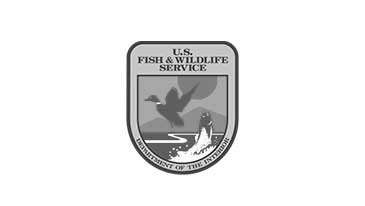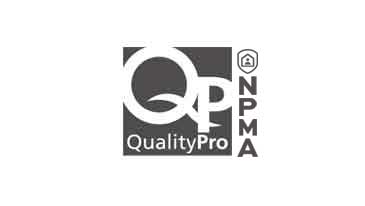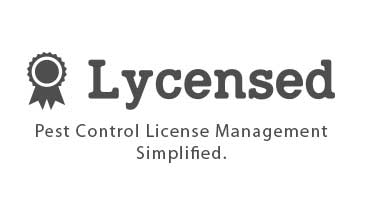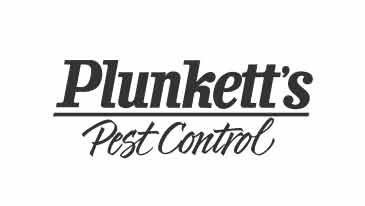Canada Geese Removal & Prevention
Do you have a goose problem in or around your property? Contact us today to get rid of unwanted wildlife!
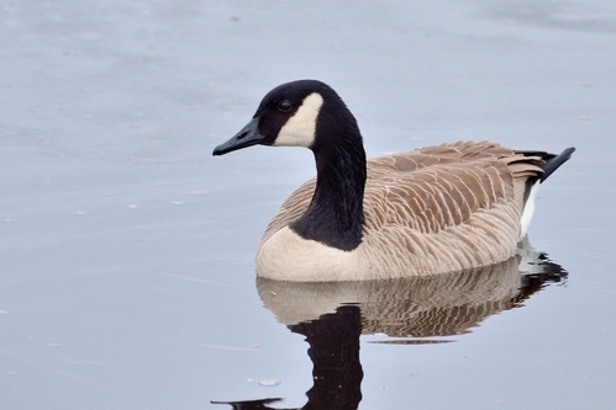
About Canada Geese
Geese are birds in the family Anatidae. These birds are intermediate in size and live mainly in the Northern Hemisphere.
Goose biology and traits vary depending on the type of goose. However, the most common type in North America is the Canada goose.
Canada Goose Biology
- Adult body length: 22 to 45 inches
- Adult body weight: 10 to 20 pounds
- Egg incubation period: 28 days
- Broods per year: 1
- Brood size: 4 to 8 eggs per clutch
- Birthing Period: May through June
- Age at which young leave nest: 28 days
- Activity seasonality: Year-round
- Primary diet: Aquatic vegetation, grasses, clover, waste grain, winter wheat, bird seed
Canada Geese Characteristics
In the past, Canada geese inhabited marshes and rural lakes that provided them nutritious aquatic vegetation to feed on and ample space to rear their young. More recently, however, man-made lakes and ponds in residential communities have created many new artificial habitats that are attractive to Canada geese for nesting, feeding, and breeding.
1. Goose Nesting Habits
Nesting sites are typically near water with protective vegetation in close proximity. Planter boxes on high-rise office building balconies quickly become nesting sites of choice. Geese are aggressive; injuries to people or pets can often happen when a goose is attempting to defend its nest.
2. Goose Breeding Habits
Canada geese mate for life but will re-mate upon the death of their mate. Mating season is during spring and is approximately 25 days long. During this time, female geese usually lay one egg every other day. The geese abandon their nest a few days after hatching.
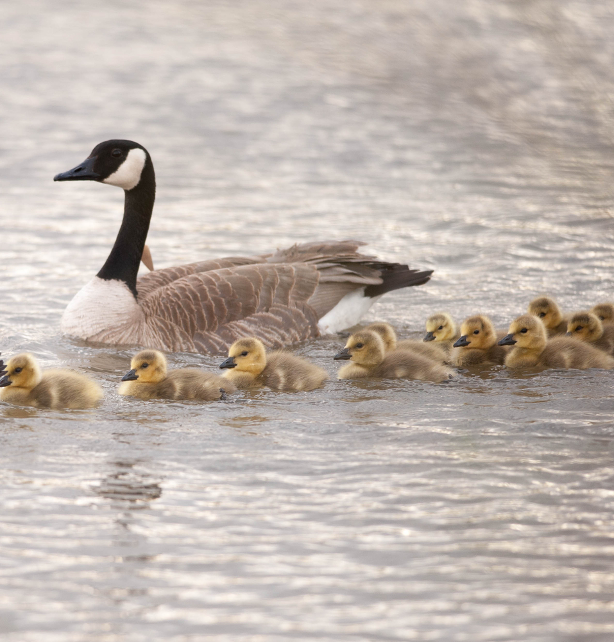
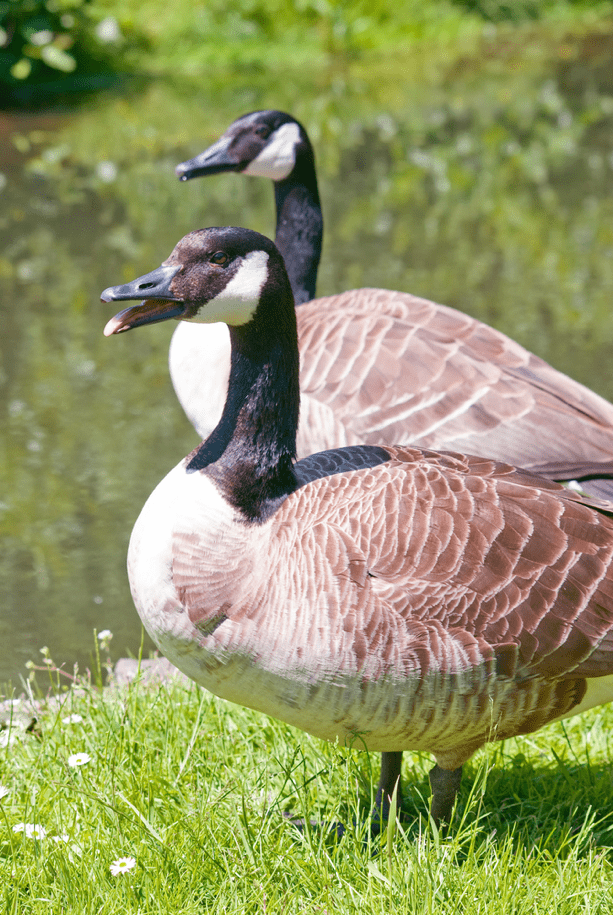
What Kind of Damage and Issues Do Geese Cause?
Canada geese can be destructive to grain crops, ornamental plantings, and more. They cause damage by trampling or consumption.
1. Littering
Geese are also known for littering the ground with their droppings. Aesthetic damages to suburban lawns, golf courses, office parks, and playgrounds contribute to extensive maintenance costs each year.
2. Damage
These birds ruin turf grass and lawns, cause bodies of water to become overgrown with weeds and algae, and create hours of clean-up only to have the same issues arise the following day.
3. Cumbersome Nesting
Geese can also be disruptive and hazardous around airports. They can often get in the way of aircrafts taking off and landing as well as on roadways to motor vehicles.
Aggressive nesting geese are a real risk to business and property owners. Although rare, people could become injured when trying to remove or flee from an aggressive goose.
When are Canada Geese Most Active?
Most goose problems occur between February to August, during their nesting period. Breeding pairs begin nesting in late February and March. The laying of goose eggs begins soon after nest construction is complete.
Female Canada geese can lay one egg every day or so, with an average clutch size of five. Incubation of eggs begins after the last egg is laid and lasts about 28 days. After hatching, goslings are incapable of flight for about 70 days. Adult geese will molt their flight feathers near the end of June, rendering them flightless for 15 to 20 days. This is the best time to round up and safely remove nuisance geese.
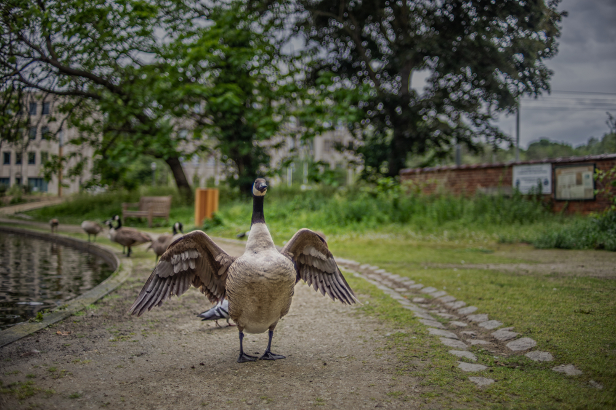
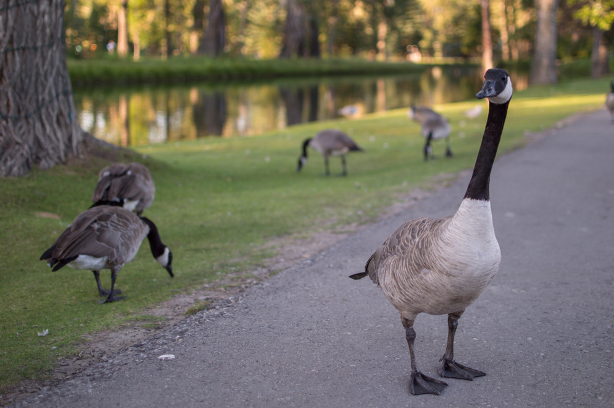
How to Deter Canada Geese
Canada geese are federally protected under the Migratory Bird Treaty Act. They can only be removed with a permit issued by the US Fish and Wildlife Agency. This is why it’s important to take preventative measures to keep geese away from your property in the first place. Otherwise, you’ll need to get help from a professional wildlife company, like Varment Guard, to get these birds removed.
A few ways to prevent geese from nesting, breeding, and feeding on your property include:
- Removing any food sources. Remove all bird feeders and wildlife feeders on your property.
- Using a repellent. Apply a goose repellent to your grass. Make sure you re-apply every time you mow your lawn.
- Habitat Modification. Create physical barriers to deter geese from entering your property, and reduce ideal nesting habitats such as letting grass grow long in certain areas.
Varment Guard Trained Goose Dogs
In addition to our goose services listed below, Varment Guard offers trained chase dogs. These dogs can be employed to frighten away geese and prevent them from resting, feeding, and nesting in problem areas.
Our dogs are trained and certified by the North American Goosedog Association. The dogs will not hurt the birds, only startle them to keep them from nesting.
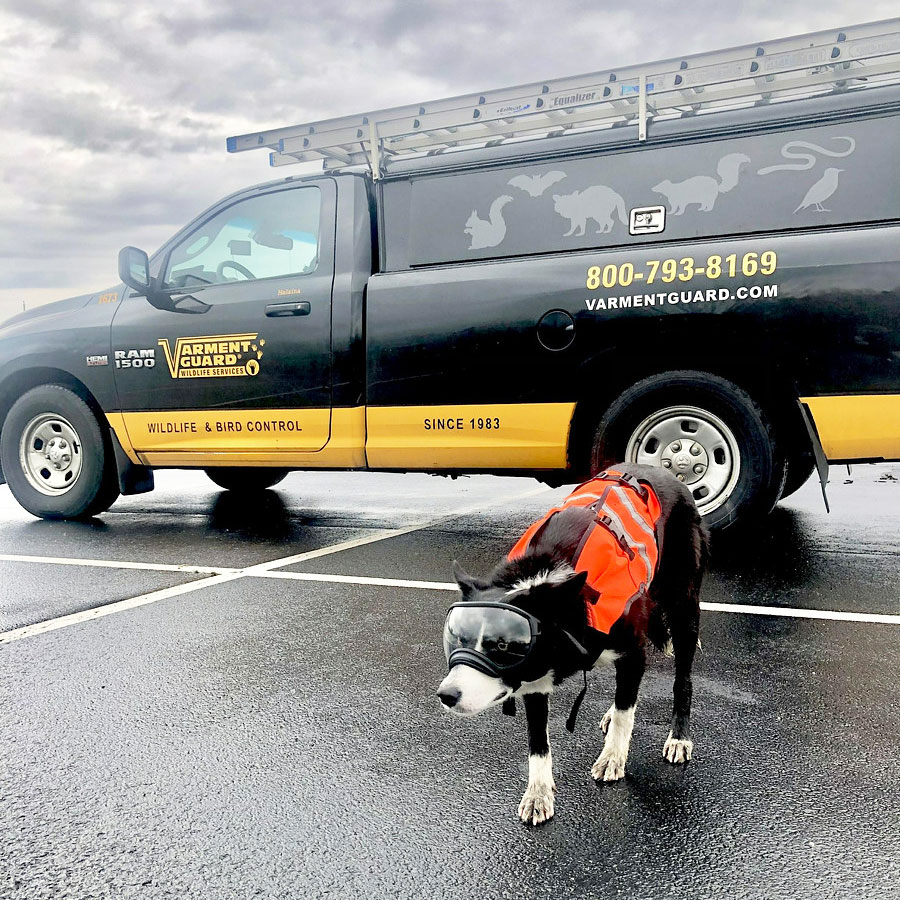
How can Varment Guard help with my goose problem?
At Varment Guard, we can get and keep geese away from your property in a safe and humane way. Our professional goose control services include:
1. Goose Exclusion
To exclude geese from your property, we create a tight grid-work or back-and-forth parallel pattern that utilizes stainless steel wire or monofilament strands. These strands or wires can be suspended over bodies of water to keep geese from landing. Alternatively, complete enclosure of problem areas and structures that need to be protected can be achieved using wire mesh or fencing that can be installed around a pond using single-strand wires.
2. Goose Removal & Round-Ups
During molting season Canada geese can be herded into a holding pen. This can be done using a walk-in method with wire fencing or netting to funnel and round-up the geese. Geese that have been rounded-up can be relocated humanely to a prearranged release site. However, it is important to also note that relocation is also not legal or recommended in every state we serve.
*TA Federal Permit is required to live-trap and relocate/remove Canada geese (per 50 CFR 21.41a*
3. Chemical Control Repellents for Geese
Varment Guard uses a non-toxic applicants derived from grapeseed oil that renders lawns and vegetation inedible, habituating the geese to recognize the area as undesirable.
4. Goose Harassment & Intimidation
Visual scare devices have been used as short-term deterrents on Canada geese.
Sound emission devices, particularly those which broadcast the alarm calls typical of Canada geese, have shown a degree of success in removing geese. Remote control vehicles can be employed in situations where we don’t want technicians or dogs to be put in danger.
Removing geese from your property may take one or several of our services. At Varment Guard, we continue to provide solutions until your wildlife problem is solved for good!
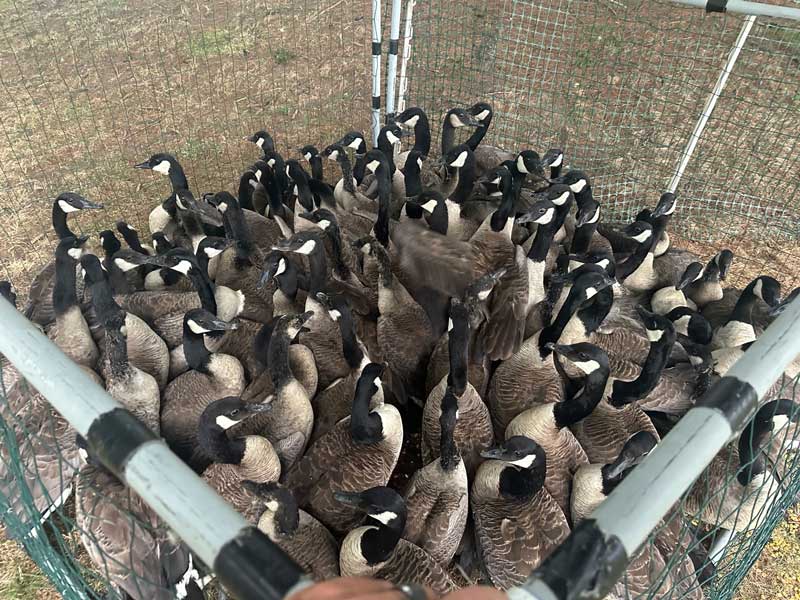
Humane Geese Removal And Round-Ups
If you live near lakes, ponds, rivers, golf courses, or reservoirs, there’s a good chance you’ve experienced problems with Canada geese. Geese can leave a huge mess all over yards, sidewalks, and driveways. The mess and issues that geese cause can be frustrating and expensive. However, it is crucial to make goose removal and round-ups as humane and safe as possible.
There is no single cookie cutter solution suitable for all nuisance goose problems. Our expert Varment Guard bird control specialists have perfected multiple techniques for effective goose control. These proven methods give us options to provide cost-effective wildlife solutions that are long-lasting.
Where Does Varment Guard Provide Geese Control Services?
Varment Guard currently offers professional bird control services in the following areas:
- Geese Control in Ohio
- Geese Control in Indiana
- Geese Control in Michigan
- Geese Control Near Panhandle of Maryland
- Geese Control in Pennsylvania
- Geese Control in Minnesota
If you are dealing with problematic geese in any of the locations listed above, then it’s time to get in touch with Varment Guard. We can help you manage any bird problems safely, efficiently, and humanely!
To request a free estimate or schedule a service, fill out our service request form or give us a call at 800-793-8169!

Frequently Asked Questions
Do geese mate for life?
Yes, geese generally mate for life. They are known for their strong pair bonds and typically stay with the same partner until one of them dies. If one member of a pair dies, the other member usually finds another mate within the same breeding season.
Are Canada geese protected?
Yes, Canada Geese are protected by the Migratory Bird Treaty Act in the United States. This makes it illegal to harm or kill these birds, or to damage or move their eggs and nests, without a federal permit.
What is the weight of a Canada goose?
The weight of a Canada goose can vary widely based on its sex, age, and subspecies. On average, an adult Canada goose can weigh anywhere from 6.6 to 19.8 lbs (3 to 9 kg).
When is the geese mating season?
Geese typically begin their mating season in the late winter to early spring, usually around February to April. This can vary slightly depending on the region and specific species of geese.
What do geese eat?
Geese are primarily herbivores and feed on a variety of grasses, grains, and berries. They also eat small insects and fish. They are known to graze on agricultural crops, which can lead to conflict with farmers.
How long do geese live?
The lifespan of geese can vary depending on the species and individual health factors, but on average, wild geese live for about 10-24 years. In captivity, they can live up to 30 years or more with proper care.
What is a group of geese called?
A group of geese on land or water is commonly referred to as a ‘gaggle’. When geese are in flight in a “V” formation, they are known as a ‘skein’, a ‘team’, or a ‘wedge’.
Do geese have teeth?
Geese do not have teeth in the traditional sense, like mammals do. However, they do have serrated edges on their beaks, which are often referred to as “teeth.” These serrations or “teeth” are called tomia, and they help the goose to cut through grasses and other vegetation more effectively. They are not used for chewing like mammalian teeth, as geese typically swallow their food whole or in large chunks. These tomia are not made of enamel and dentin like mammalian teeth, but are extensions of the beak itself.


